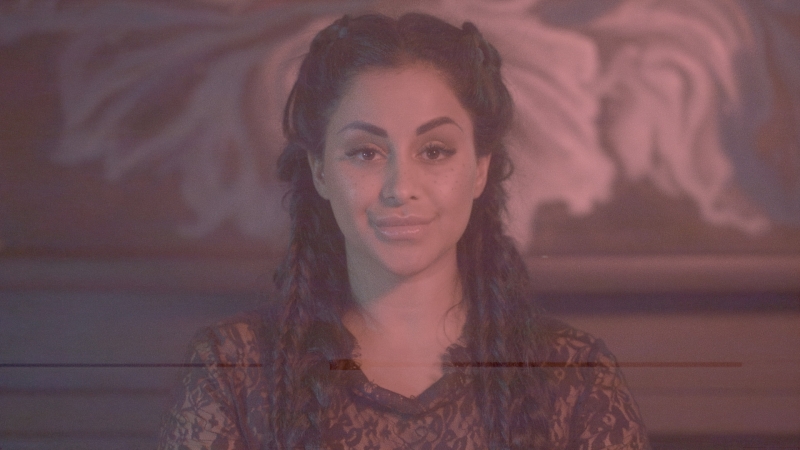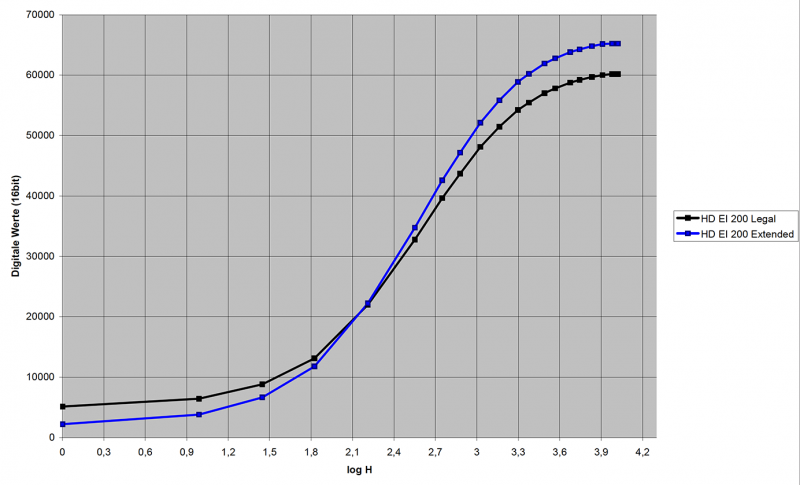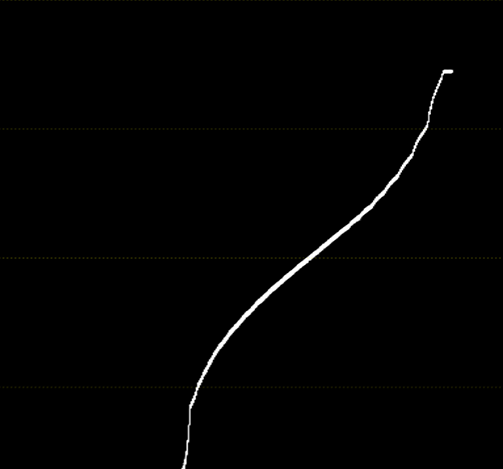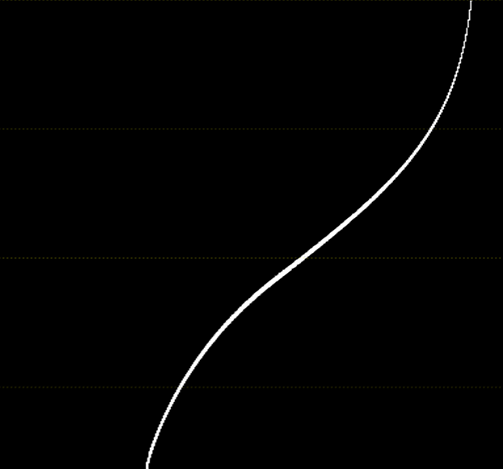-
Posts
150 -
Joined
-
Last visited
Content Type
Profiles
Case studies - Free
Case studies - Premium
Resources
Insider
Courses
Forums
Store
Everything posted by Andy Minuth
-
Hi Sushil, I have one comment: The second shot feels to heavily manipulated to me (sky and flare). Especially with the direct cut to the third shot, which also has a sky gradient but feels much more natural. The moment You see the third shot, You think something was wrong with the second one. Just my 2 cents.
-

Base Grade and the evolution of grading tools
Andy Minuth commented on Admin's insider article in Color Grading
I think a big problem with classic saturation is, that the tool is not colour space aware. The results are different, when You are applying it in 709, AP0 or WideGamut for example. Every time overweighing different colours, depending on the gamut it is applied in. Additionally I have the feeling that the secondary colours C,M,Y are always a bit less favoured in classic saturation tools compared to R,G,B. I am not sure about the reasons for that. Maybe it is because R,G and B have more space to move in the gamut, or maybe it is because they can achieve higher saturation values in the display (which is also working in RGB). And on top of that: Our perception of colourfulness is probably not working like a simple technical RGB colour-space, but much more complicated. -
FYI: I wrote an article about that topic here on Lowepost.
-
Very nice reel, Nikola.
-
I am a bit disappointed that they set the 'Legacy' setting as the default in the new version. Which is the wrong setting.
-
Welcome Kristopher, the scenes look nice. Two comments: Coming back to the same shots, was a bit too repetitive for me. I think there is some potential too tighten it up. I suggest to put your name at the end. Usually people have to see something interesting, before they pay real attention. So if someone likes something in the reel, his attention will go up, and hopefully he remembers your name at the end.
- 3 replies
-
- 4
-

-
- grading
- color correction
-
(and 1 more)
Tagged with:
-
I think You have to get the 'LUT Translator' app for it. The template is a clean vector field. With the app any (non spatial) color operation that is applied to that image can be translated into a LUT.
-

Finishing a Feature
Andy Minuth replied to Aljoscha Hoffmann's topic in Editing , Color grading & Finishing
AFAIK there are color management tools in Clipster. But we are not using them. We are just passing through the images. For a feature for example we are rendering 12bit X'Y'Z' Tiff files for the DCDM and dpx/ProRes in Rec.709 from Baselight. Syncing with sound, subtitles and DCP encoding is then done with Clipster. -
I am not quite sure what you are driving at. But with the 'Colour-Space' operator you can convert the image to 'RLab' which is related to CIE L*a*b*. The channels will be mapped like this: R -> red-green compononent G -> luminance component B -> blue-yellow component I am using this space sometimes for special treatment. I recommend to convert back to your working space after your RLab operations.
-

Finishing a Feature
Andy Minuth replied to Aljoscha Hoffmann's topic in Editing , Color grading & Finishing
Welcome to the forums Aljoscha. Here commercials are usually finished in Flame. (Sometimes Baselight) For features the image is finished in Baselight. DCDM and Rec709 images are rendered there, but the marriage of picture and sound is done with Clipster. -
Congrats Margus!
-
The full name is 'Recommendation ITU-R BT.709 - Parameter values for the HDTV standards for production and international programme exchange' Recommendation: The ITU is responsible for defining worldwide standards. They are then published as recommendations. ITU-R: International Telecommunication Union Radiocommunication Sector BT: This recommendation is part of the 'Broadcasting service (television)' series. 709: The number of this paper. Rec.709, BT.709, etc. are different abbreviations for the same thing. You can download the paper for free here: http://www.itu.int/rec/R-REC-BT.709-6-201506-I/en Fun fact: As far as I know, a transfer curve for displays (e.g. for mastering or color grading) was not defined in ITU-R BT.709. Everyone was using Sony CRTs back then, which made them the de facto standard. In ITU-R BT.1886 the eotf for displays was finally defined.
-
I think by tone mapping he means the process of mapping a higher dynamic range to a lower display dynamic range. In the ACES system for example this is done in the RRT. So when he applies his creative LUTs he is not changing the color-space of the footage. He also explains this later in the text. Usually a print emulation LUT for example is converting from Cineon Log Printing Densities to DCI P3. His LUTs are comparable to LMTs in the ACES system. They are creative looks that can be applied in high dynamic range. Probably there are some luma changes in these LUTs. Many looks depend on selective luma changes, for example changing the brightness in relation to the saturation and the hue.
- 8 comments
-
- 11
-

-
Hey there, as I am not a native english speaker, I wondered if there is a colloquial term of creative people that describes the technical 'Gamma'? In German for example there are terms that literally translate to 'heaviness' ("Schwere") and 'airiness' ("Luftigkeit"). They roughly describe what we control with the gamma parameter in a video signal (brightness and contrast at the same time without blowing out the whites or blacks). I know that every client has their own vocabulary and there are different meanings of the same word. But can You give some examples of what non-technical people say to You, when they ask for a gamma adjustment? Best, Andy
-
Great article, Utsi! Thanks for sharing Your knowledge.
-

What is the best color grading software?
Andy Minuth replied to Bledar Cili's topic in Editing , Color grading & Finishing
I second that. The colour pipeline and toolset of the Baselight Plugin is identical to the full systems. But a huge drawback is the missing timeline and all the workflow tools. It is nice to learn, but to do a full project under pressure might be a bit of pita. -

High-pass filters\ edge detection sharpening
Andy Minuth replied to Mark Mulcaster's topic in Baselight
Welcome to the forum, Mark. This You can do with the layer Blend-Modes (e.g. Luminance, Color). You can also choose a different 'blend-source', for example the original image or another layer. See this tutorial for an introduction. About Your first question I am not quite sure. A classic edge-detection tool is not available, unfortunately. Probably You are able to do a matte like this with 'MatteTool' (Erode/Dilate, In Out Blur) and Layer Blend modes, I guess. But the standard sharpen tool in Baselight is extremely powerful, when You learn about all the parameters. -
Started working on a new Thriller 'The other side' yesterday. I found some nice toned down looks during my first tests. The film utilises non-linear storytelling a lot. I think I will experiment with different creative white-points for the scenes.
-
-
 1
1
-
- Report
-

Cineon Log transform problem
Andy Minuth replied to Nicolas Hanson's topic in Editing , Color grading & Finishing
You are right, Paul. But the formula/matrix based transforms are also more "boring" and less popular among colourists. In general I suggest to use whatever transform one likes to go from Log to a display space. But for the inverse I advise to choose a clean one, that is not based on film or includes gamut de-compression. -

Cineon Log transform problem
Andy Minuth replied to Nicolas Hanson's topic in Editing , Color grading & Finishing
Out of curiosity I put Your example into Baselight and converted it to a Log space. All the available transforms are free of artefacts. Here is one result. Additionally I noticed that in Your inverted picture a lot of noise gets pushed, which is not optimal I think. -

Cineon Log transform problem
Andy Minuth replied to Nicolas Hanson's topic in Editing , Color grading & Finishing
By 'Linear' I assume You mean a videoish space like Rec.709 / 1886. The problem is that there is no perfect conversion from a low dynamic range color space like Rec.709 to a high dynamic range space like Cineon-Log. Going the usual way from Log to Rec.709 some information is lost, especially in the very bright and dark and also highly saturated areas. When you try to invert this lossy process, usually artefacts appear. This is a LogC to Rec.1886 Curve that I plotted years ago (for Legal and Extended Range which is unimportant here). Pay attention to the flat parts of the curve in the shadows and highlights. When you invert a curve like this, these parts are very steep and these code values are getting stretched a lot. This means that a tiny difference in the original results in a big difference in the result. Here I put two luma waveform plots of different Video (Rec.1886) to Cineon-Log transforms. You can see that the first one is very smooth compared to the other one. The first one is practically free of artefacts, while the second one has some problems. This is just for the luma part of the transform, additional problems occur for the colours (but this is more difficult to visualise). Filmlight optimised and smoothed the inverse transforms that are used by Truelight Colour Spaces within Baselight, to produce less artefacts. @Daniele Siragusano talks about it in this video around 06:20 - 06:50 After the explanation, my suggestions how to solve it: Generally I suggest to avoid a workflow like this (Video -> Log -> Video). But I know that usually the colourist cannot influence the camera settings Try to use a different transform, that produces less artefacts. I don't know if there are choices in Resolve. In Baselight the cleanest one is the inverse transform of the 'Truelight Video 1' DRT. Generally You can reduce the artefacts, when You avoid the extreme ends of the transform. This means it will probably work better if you reduce the contrast of the image, before you send it through the conversion. Once the picture is converted to Log without artefacts, You can increase the contrast as much as You want. If You have highly saturated colours in the picture, You can additionally try to reduce the saturation a bit before the conversion. -

Green channel values
Andy Minuth replied to Nicolas Hanson's topic in Editing , Color grading & Finishing
Yes, I was not precise enough about terminology in my last post: Luminance should not be used in this context, because it is an absolute value that describes the amount of light in physics. The light emitted by a display for example is described by luminance and measured in cd/m2. Here the term relative luminance Y or luma Y' should be used. Relative luminance Y is a linear value and normalised to 1 or 100. Luma Y' is the same achromatic part of an image but nonlinear, it uses gamma compression. In video systems usually luma is used, but the formula is also true for linear components. Y = 0.2126 R + 0.7152 G + 0.0722 B Y' = 0.2126 R' + 0.7152 G' + 0.0722 B' Both formulas are valid. The ' indicates nonlinear values due to the gamma compression. These coefficients are intended for Rec.709 HD systems. For standard definition Rec.601 other coefficients are used: Y′ = 0.299 R′ + 0.587 G′ + 0.114 B′ These coefficients are also intended for JPEG images, which might explain the use in Photoshop. A quote about the term luminosity from Wikipedia: For further reading I recommend Charles Poynton and Wikipedia: http://www.poynton.com/PDFs/YUV_and_luminance_harmful.pdf http://www.poynton.com/notes/colour_and_gamma/GammaFAQ.html https://en.wikipedia.org/wiki/Luma_(video) -

Green channel values
Andy Minuth replied to Nicolas Hanson's topic in Editing , Color grading & Finishing
Spatial resolution is mostly perceived via Luminance. In Rec 709 Luminance is calculated from RGB with this formula: Y' = 0.2126 R + 0.7152 G + 0.0722 B The Green channel contributes more than 70% to the Luminance signal. -
Looks nice. ThumbsUp
-
Contrast measurements are about the dynamic range of the projector. Sequential contrast is determined by comparing a completely black frame with the maximum brightness in another frame. It describes kind of the the maximum contrast of the device. Intra-frame contrast in comparison describes the maximum contrast within one frame, which is usually much lower. It is usually measured with a black/white checkerboard pattern or with a small white patch in a mainly black frame. Important to note is that the lower intra-frame performance of DCI compliant projectors is NOT due to an adaptive iris or dynamic light dimming (which mess up images in consumer displays). The reason lies mainly in the imperfection of the projection lens, which lifts the blacks because of flare. We know the effect from camera lenses: If there is a very bright object in the frame, the black level even of technically decent lenses like Master Primes is lifted a lot. To throw in some numbers, the DCI minimum specs and tolerances for example are: Sequential contrast: nominal 2000:1 review rooms (e.g. grading) 1500:1 theatres 1200:1 Intra-frame contrast: nominal 150:1 review rooms and theatres 100:1






